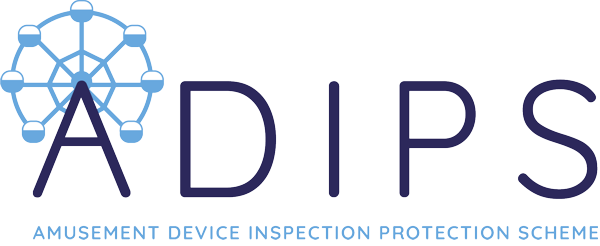
The demand for ADIPS inspection – getting the balance right
With an increase in rides and a decrease in inspectors over recent years it’s not too surprising that the Amusement Device Safety Council (ADSC) are looking closely at ways to ensure there are enough competent inspectors to carry out examinations of travelling fairground rides.
A number of inspectors have left the ADIPS register over recent years. All too often this is inspectors who worked on a high number of travelling rides. In previous years there has been enough spare capacity to pick up this work but the as each year passes this is getting more and more challenging.
Efforts to increase inspectors have had some success (there are actually more ADIPS inspectors this year than there has been in the last 2 years) but it is the availability of inspectors who work on travelling rides which is of greatest concern. So rather than just focus on recruitment of inspectors the ADSC are now looking at things differently. The major area being looked at is risk based inspection which looks at the danger presented by a ride and whether the same level of inspection is required. In the current system each ride is inspected annually but in a risk based approach this could adapt to the type of ride, so for example, a low risk ride could be inspected every two years rather than annually.
Any changes will take some time. But in the meantime there are still things that ride operators can do to help. So if you are concerned about your inspection this year, you should consider the following before making any arrangements.
Preparing for inspection
A proper inspection takes time. It is a thorough examination of all safety critical parts to check if they are in a safe condition. To check these parts requires access. An operator can help by ensuring these parts are readily accessible and cleaned/degreased as necessary, so your inspector can commence the work once they arrive. An inspector also needs to see your documentation, so make sure you have this ready for the inspection, otherwise it will cost both you and the inspector time while you are getting this together. To make matters worse your inspector might be unable to finish the inspection without it.
Planning for inspection
Just like an MOT for your car, you can arrange an inspection one month prior to its expiry date without effecting the annual expiry date. This gives you a bigger window to arrange your inspection, so you don’t need to focus on the 1 – 2 days before it expires as you won’t lose any operating days.
Rearranging your inspection
Operating fairground rides is seasonal work. This is reflected by 80% of inspections taking place throughout the spring and summer months (March – August) each year. This means only 20% of inspections are happening in the remaining six months of the year! To make the prospect of moving dates even more attractive the ADSC has been funding inspection costs when operators have moved their inspection to quieter months. Hundreds of operators have benefitted from this and now find arranging an inspection much easier.
Recent Posts
Archives
- April 2024
- March 2024
- December 2023
- October 2023
- August 2023
- July 2023
- May 2023
- March 2023
- February 2023
- January 2023
- December 2022
- April 2021
- April 2020
- March 2019
- September 2018
- August 2018
- October 2017
- September 2017
- May 2017
- April 2017
- March 2017
- December 2016
- September 2016
- August 2016
- June 2016
- February 2016
- August 2015
- July 2015
- May 2015
- April 2015
- February 2015
- January 2015
- September 2014
- August 2014
- March 2014
- January 2014
- December 2013
- November 2013
- October 2013
- September 2013
- August 2013
- July 2013
- June 2013
- May 2013
- February 2013
- December 2012
- January 2012
- January 2011





